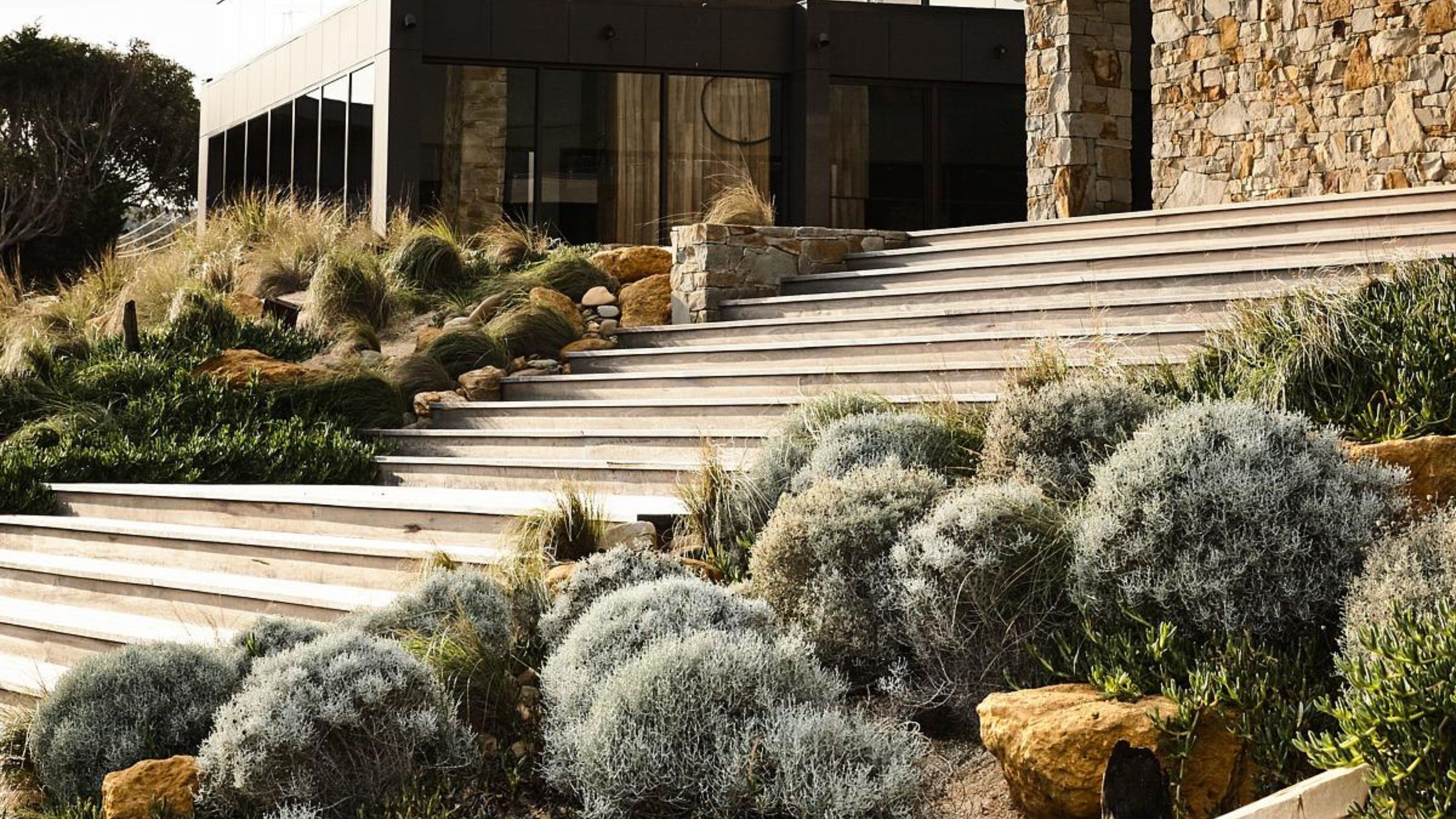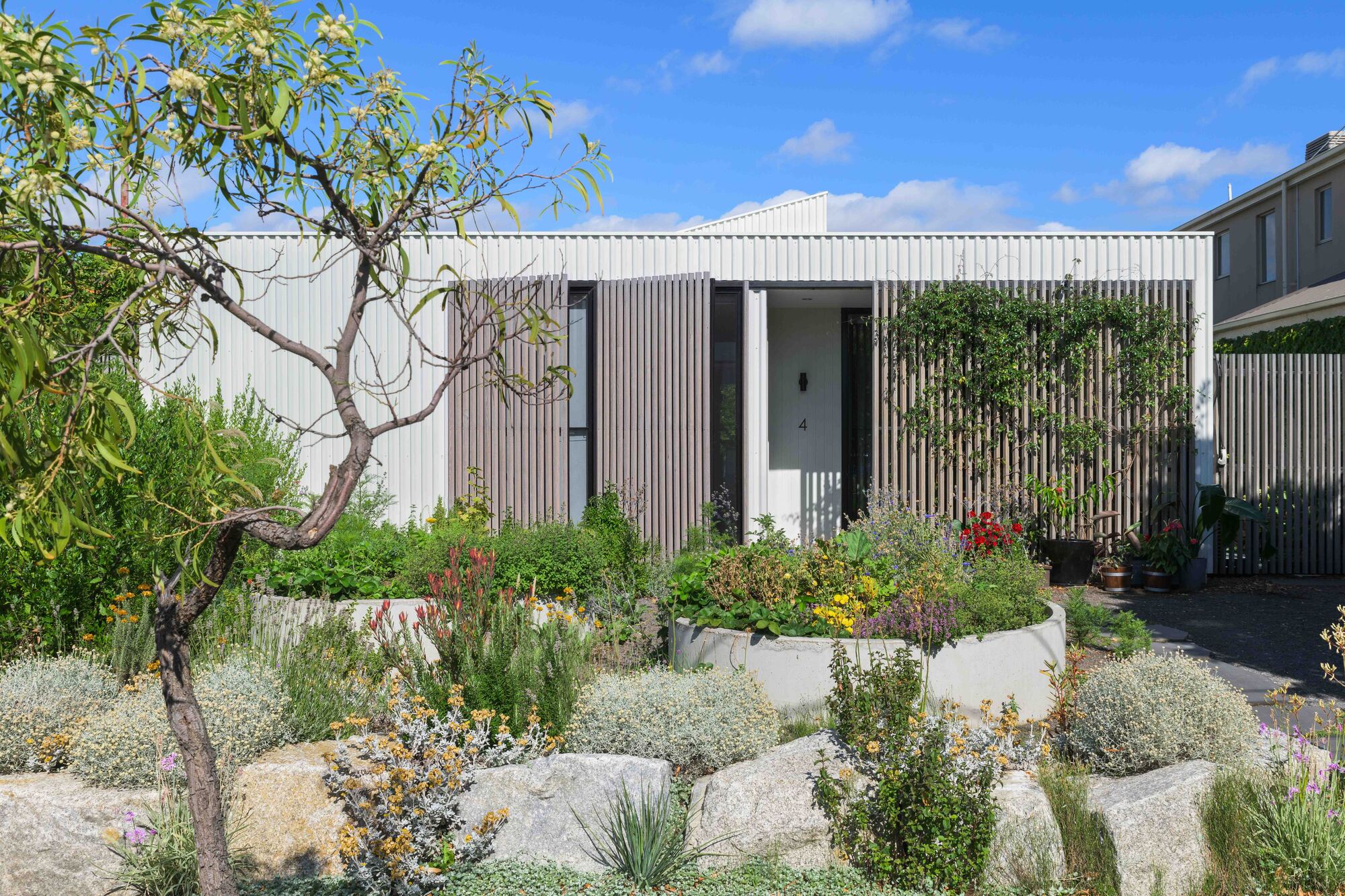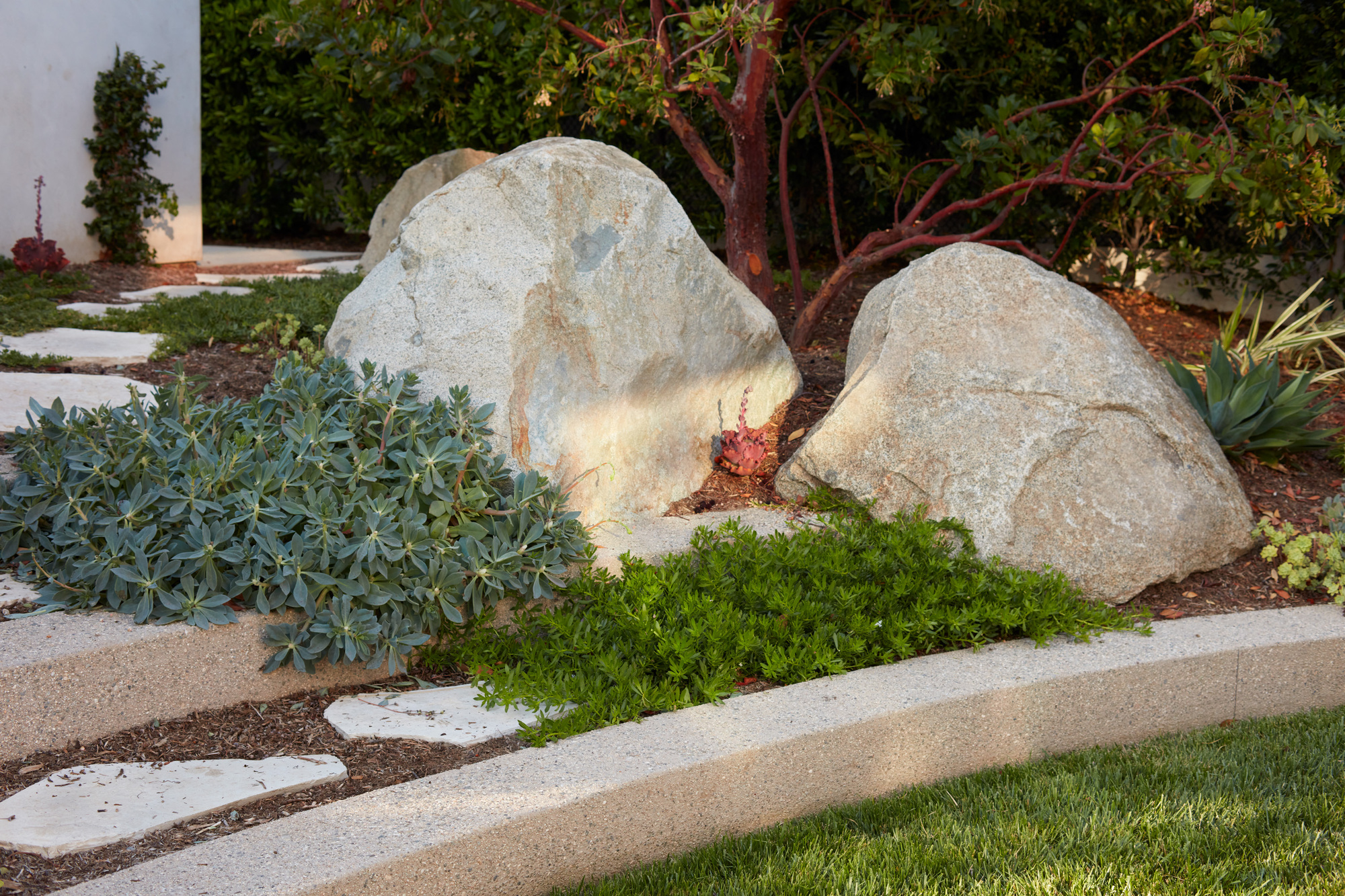
Landscaping your front yard isn't all about the plants and flowers you choose to grow. Rocks of all shapes and sizes can also be used widely as a landscaping device, adding interest, contrast and drama to your space all the while looking natural as though they've been there the whole time. They are also very low maintenance and any moss, plants or lichen that might grow over time can only make the rock look more at home in your front yard.
'Rocks in all forms add a naturalistic feel to a space and depending on the type and placement,' says Kat Aul Cervoni, designer at New York boutique firm, Staghorn. 'And they can read both classical and contemporary in style.'
From larger boulders that help to bring texture, to smaller rocks that line a pathway and help establish zones within your outdoor space, rocks are the perfect tool for front yard landscaping. Here are 5 different ways the experts recommend using rocks in your outdoor entryway space.
1. Use your rocks to line a pathway

Rocks in the front yard are one of the best ways to improve a front yard pathway, lining the path and directing people to the front of your home. Rocks should be laid out to demarcate the zone between the path and the flowerbeds or lawn, like this example from California-based designer and contractor for Susan Skornicka Designs & Construction, Susan Skornicka.
'For this front entry design, we used rocks to separate the garden from the stone pathway, creating visual interest as you walk along,' says Susan. 'The rocks add another gorgeous natural element along the pathway through the garden to the home, elevating the overall design.
'In this design we used a combination of rocks, mainly Sydney Peak and Sausalito, sourced from Shamrock Materials in San Rafael, California,' Susan adds. 'They artistically frame the pathway in a nonlinear manner.'
2. Use rock for a focal point feature

Try combining the elements to create a water feature for a modern front yard that brings a feeling of calm. 'With a little bit of effort, larger boulders can be outfitted with cascading water or fire elements,' says Michael McGowan, senior landscape architect at KAA Design Group.
In this example, this weeping boulder fountain allows water to bubble up through a hole drilled in the core of the rock, filling a small basin to dissipate water pressure, then spilling over the polished edges of the rock, bringing a sheen to the rock and emphasizing the shape of it. Water is collected in a sub-surface basin that is located below the bed of crushed stone. The basin houses a small pump that recirculates the water.
'The impact of the weeping boulder on the garden is severalfold,' says Michael. 'Its location within the entry courtyard of the home means that guests and homeowners are greeted with the soothing sounds of gurgling water and the delicate roil of water falling on crushed stone.
'This sound and motion symphony captivates your attention as you enter the space, resetting your mood as you traverse the bridged pathway. Subtle breezes flowing through the space are cooled as they flow around the feature, helping to comfort passersby.'
3. Go small for the small and subtle look

Landscaping ideas with rocks in your front yard aren't always about going for the big and bold look, and you can enlist the help of smaller rocks to help add texture. This might be particularly useful if you live in an arid landscape where a lawn might not be an option.
'There are numerous ways to incorporate rocks into your landscape design, one being trying pea gravel path or patea,' recommends Kat Aul Cervoni, landscape designer at Staghorn.
In this example from 180 Degrees Design + Build, the rocks are slightly larger than pea gravel, and are used to demarcate the garden bed from where the cacti grow. In this instance, these smaller rocks reflect and mirror the climate of the surrounding landscape, nestled at the base of Camelback Mountain in Phoenix, Arizona, and the cacti shadows cast a dramatic shadow over the rock bed, bringing texture to the front yard.
4. Or go for the boulder look for plants to thrive

Don't be afraid to go for the bold bolder look with larger rocks that create a dramatic impact. 'Accessorize your rock garden with larger rocks, boulders, and plinths,' says Kat. 'These can be placed so they look like a creek bed or natural stream, or more of a rocky mountainside or rocky outcrop.
Larger rocks have the added effect of creating dimension and if you're creating a more wild-looking garden, it gives texture and structure for your plants and flora to cling onto, providing places for plants to grow or cascade over.
If you're looking for plants to work alongside your larger bolder rocks, creeping phlox and delosperma work beautifully in a full-sun rock garden or against the edge of a stone wall that they can cascade down.
Woodland and shade gardens can also benefit from the addition of rocks as they offer a place for moss to grow and proliferate - think lush green ferns that might bring more of a forest-y feel to your outdoor space.
5. Take inspiration from Japanese gardens

Boulder rocks set as standalone pieces can look great if you're going for the zen and tranquil feel of a Japanese garden. 'Arrange your larger boulders more sparingly as in the style of a Japanese garden where the rocks are selected and placed to mimic natural forms in nature, like mountains,' says Kat.
To really hammer home the theme, introduce a water feature of some kind and tall bamboo plants mixed with bright green Hakonechloa grass that bring a Japanese look to your front yard.







